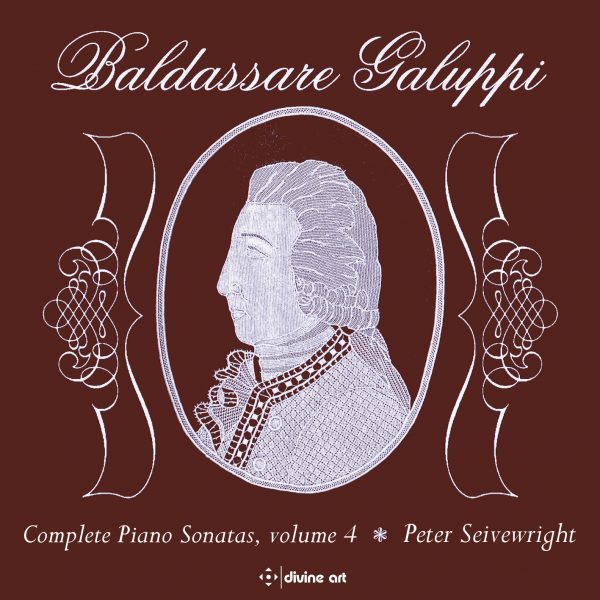The Consort
I was glad to receive this disc as, coincidentally, it arrived prior to my giving a harpsichord course in northern Italy, for which Galuppi was one of the set composers. Best known as a pioneer of opera buffa (of which he wrote some 109), Baldassare Galuppi (1706-85) visited London in 1741-3 where he was lauded at the King’s Theatre, Haymarket. Galuppi was choirmaster at St Mark’s in Venice from 1762 and eventually died there, but took an extended break between 1764 and 1768 in St Petersburg, at the behest of Catherine the Great. Galuppi was the last great composer of the independent Venetian Republic. This hugely prolific composer also produced about 130 harpsichord sonatas, toccatas, divertimentos, lessons and other fragments. They are varied and very diverse; most are in binary or early sonata form, and he favours keys of up to four sharps or flats.
Galuppi’s first two opus numbers, consisting of six sonatas each, were published in London in 1756 and 1759 respectively. His unpublished Passatempo al cembalo of 1781, consisting of a further set of six sonatas, was composed ‘in omaggio alia granduchessa di Russia Maria Feodorovna’. There is still no definitive catalogue of Galuppi’s works, despite attempts by Fausto Torrefranca (1909), Charles van den Borren (1923) and Hedda Illy (1969), who listed 103 works consisting of between one and four movements each. No chronology of his keyboard works has been attempted, so research into them still leaves much to be desired. The rest of his works (as pointed out by Keith Anderson in the liner notes of another recording), are ‘subject to misattributions, with movements sometimes duplicated, transposed or misplaced’.
Additionally, sources are widely scattered (they are found in nearly twenty different libraries), so the task of recording the complete works, which Seivewright and Divine Art instigated in 1998, was a complex project: it has taken twenty years to arrive at volume 4, with many more still to be completed. The music is well worth the performing, although the sonatas are perhaps better enjoyed singly than en masse. It is also frustrating to be unable to follow the scores, and the programme notes that accompany this CD give no sources or information on the texts.
Peter Seivewright studied at Oxford and then at the Royal Northern College of Music, he has performed extensively as a recitalist and concerto soloist. He was among the first musicians to research Galuppi’s keyboard sonatas, a task which he began in 1994: many had to be reconstructed from single-movement manuscripts. Seivewright believes that the works were written for the pianoforte rather than the harpsichord, due to their frequent use of sostenuto, among other factors. He has now recorded 33 sonatas; they have been performed on diverse instruments and they work well on the early piano.
It is clear from the liner notes that Seivewright is happy to play Galuppi on a modern grand piano; in fact when he started this fourth recording in 2012, he used a Bosendorfer Imperial Concert Grand which he considered to be ‘the perfect instrument for realising these textures’. The concerto in G major added at the end of the CD (about which, Seivewright informs us, there is no documentary evidence for its attribution), was recorded using a Steinway Model D, accompanied by the Scottish Baroque Soloists.
Seivewright is an extremely assured pianist, with a light, confident and colourful touch; he explores the virtuosity of the music and the tonality of the instrument with a generous use of the sustaining pedal, though I feel that he compensates for the difference in scale between this and the early keyboard by an over-use of staccato. Perhaps unwilling to add a cadential ritardando or rubato, he sometimes pushes the tempo, finishing movements rather suddenly. His playing is clean, neat and well-toned. Although the use of a concert grand can lead to a lack of the elusive expression of fragility, questioning, and charm, Seivewright’s fleetness of touch is excellent.
@divineartrecordingsgroup
A First Inversion Company
Registered Office:
176-178 Pontefract Road, Cudworth, Barnsley S72 8BE
+44 1226 596703
Fort Worth, TX 76110
+1.682.233.4978












